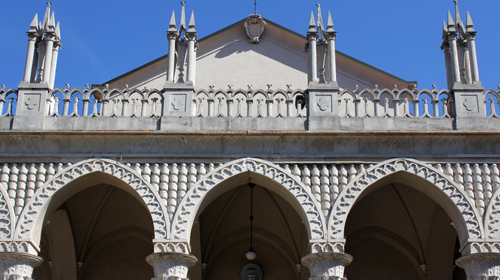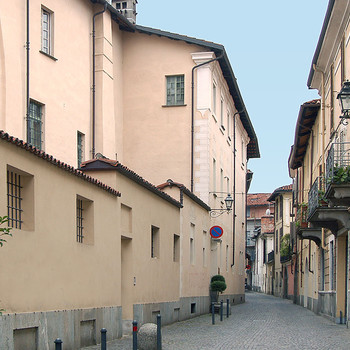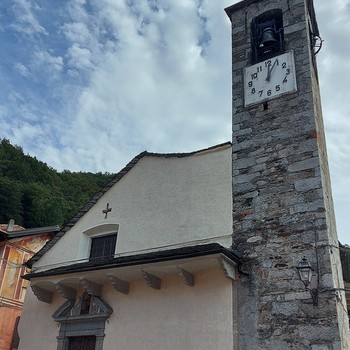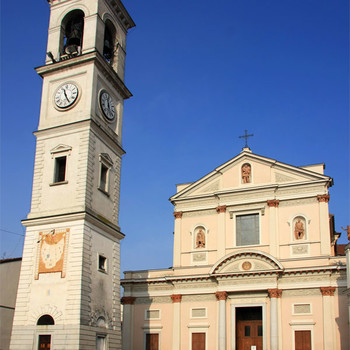Biella Cathedral
Diocesi di Biella ( sec. III; XVIII; XIX )
On 20 March 1402, master mason Giovanni Borri began to rebuild the place of worship over the foundations of the medieval church. It was modified several times, until the construction of the current eclectic façade.
Cathedral of San Lorenzo
Diocesi di Alba ( sec. VI; XIX )
The apse area is home to a beautiful wooden choir dated 1512, and the altarpiece with Saint Lawrence, created by painter Claudio Francesco Beaumont in 1766.The cathedral underwent a radical Neogothic restoration in the 19th century.
Cathedral of Santa Maria del Bosco
Diocesi di Cuneo-Fossano ( sec. XVII; XIX )
The church became one of the most important parishes in the town after Mondovì’s elevation to diocese in 1388.Throughout the 17th century it was subject to many interventions and in 1817, with the establishment of the diocese, it became the cathedral.
Pinerolo Cathedral
Diocesi di Pinerolo ( sec. X; XV; XIX )
The cathedral, dedicated to Saint Donatus, Bishop of Arezzo, is mentioned at the end of the 10th century.
Chiesa di Santa Giulia Vergine e Martire
Diocesi di Torino ( sec. XIX )
La facciata è tripartita, con tre rosoni. Interno a croce latina con tre navate. La visita alla chiesa parrocchiale di Santa Giulia Vergine e Martire è gestita dall’Associazione culturale Carlo Tancredi e Giulia di Barolo.
Museo Diocesano di Pinerolo
Diocesi di Pinerolo
Storia, culto e bellezza: così si può sintetizzare il Museo Diocesano di Pinerolo.
Chiesa di San Bartolomeo
Diocesi di Novara ( sec. XV; XVI; XVII )
La parrocchia venne istituita ufficialmente nel 1554 dal Card. Morone, vescovo di Novara, staccandola da Omegna.
Chiesa di San Michele Arcangelo
Diocesi di Novara ( sec. XVII; XVIII; XIX )
La chiesa di San Michele Arcangelo è la parrocchiale di Cameri, in provincia e diocesi di Novara[1]; fa parte dell'unità pastorale di Galliate.
Santuario della Madonna della Medaglia Miracolosa
Diocesi di Cuneo-Fossano ( sec. XX; XXI )
Da piccola cappella a Santuario mariano
Eclecticism for the City and its Hinterland

The other major Piedmontese style was Eclecticism, not because it was local – it was eminently international – but because its formal results were exquisitely conceived and executed in the subalpine area. Moreover, it was the manner of the new Kingdom of Italy, fusing with Renaissance and Baroque to forge the Umbertine style. Neogothic was preferred for churches, especially in Alba and Pinerolo, where it corresponded to the original shape of the buildings, which contemporary practice restored extensively, almost rebuilding them. Turin has the lion’s share but in the local area there are cases of great artistic merit, including examples in Dogliani by the architect Schellino, a singular artistic figure who was isolated but truly creative, combining Classical and Gothic in his building work.














